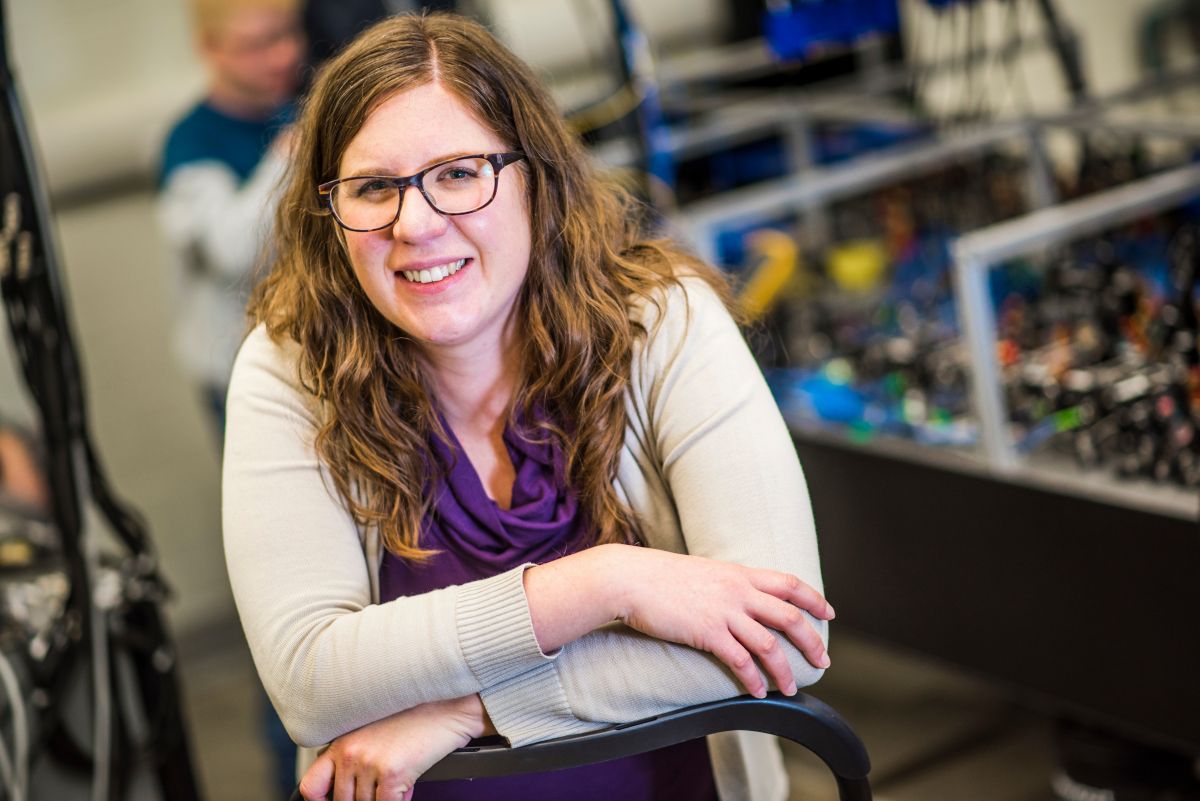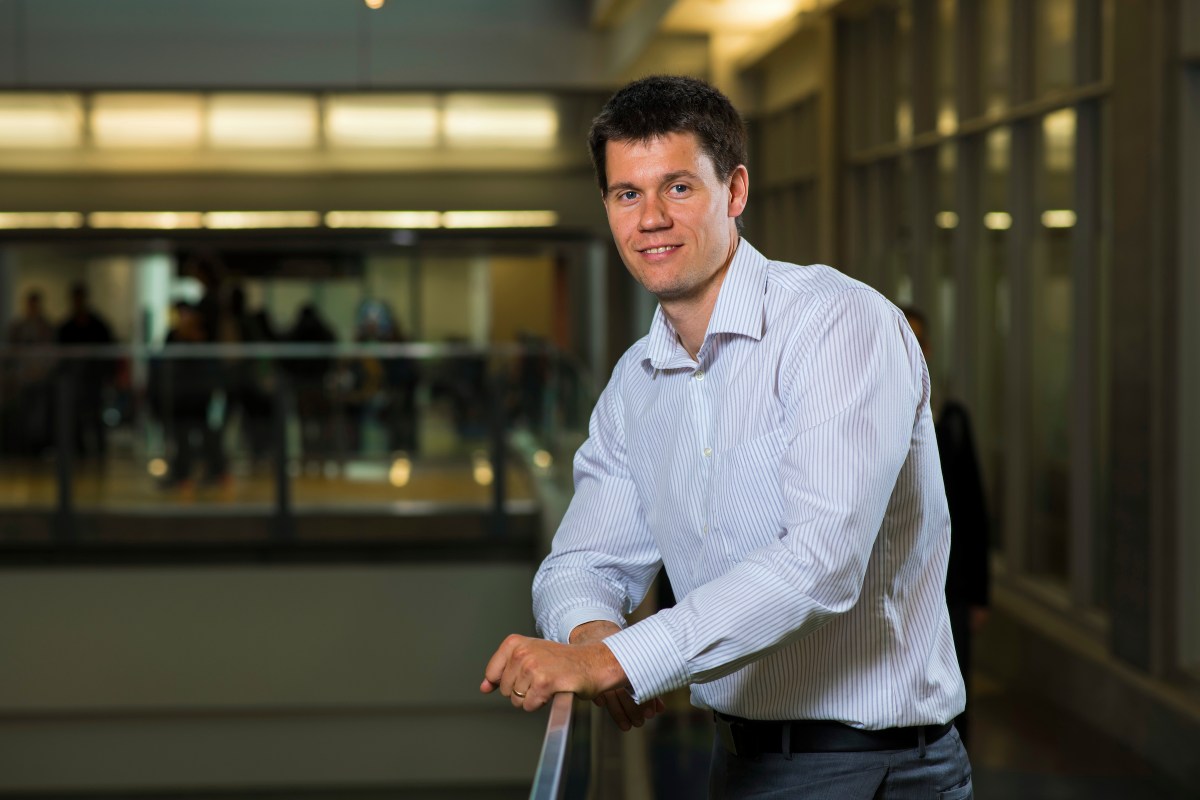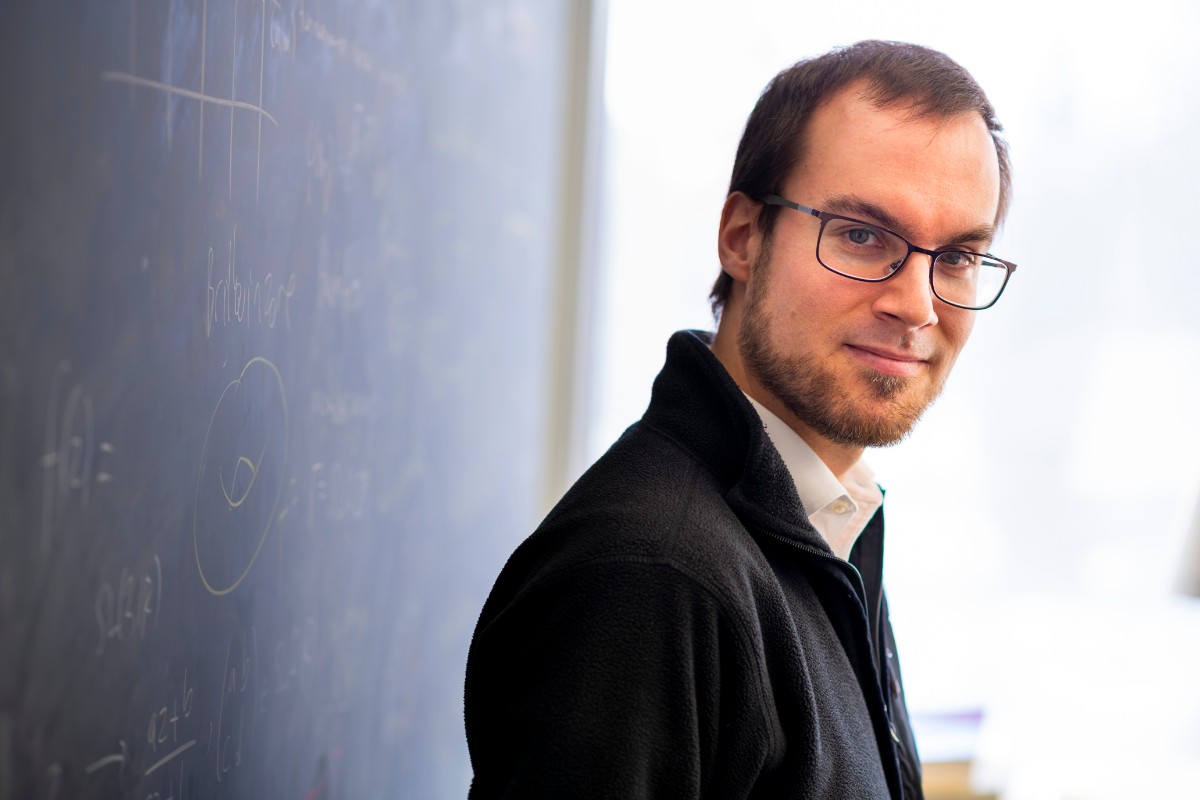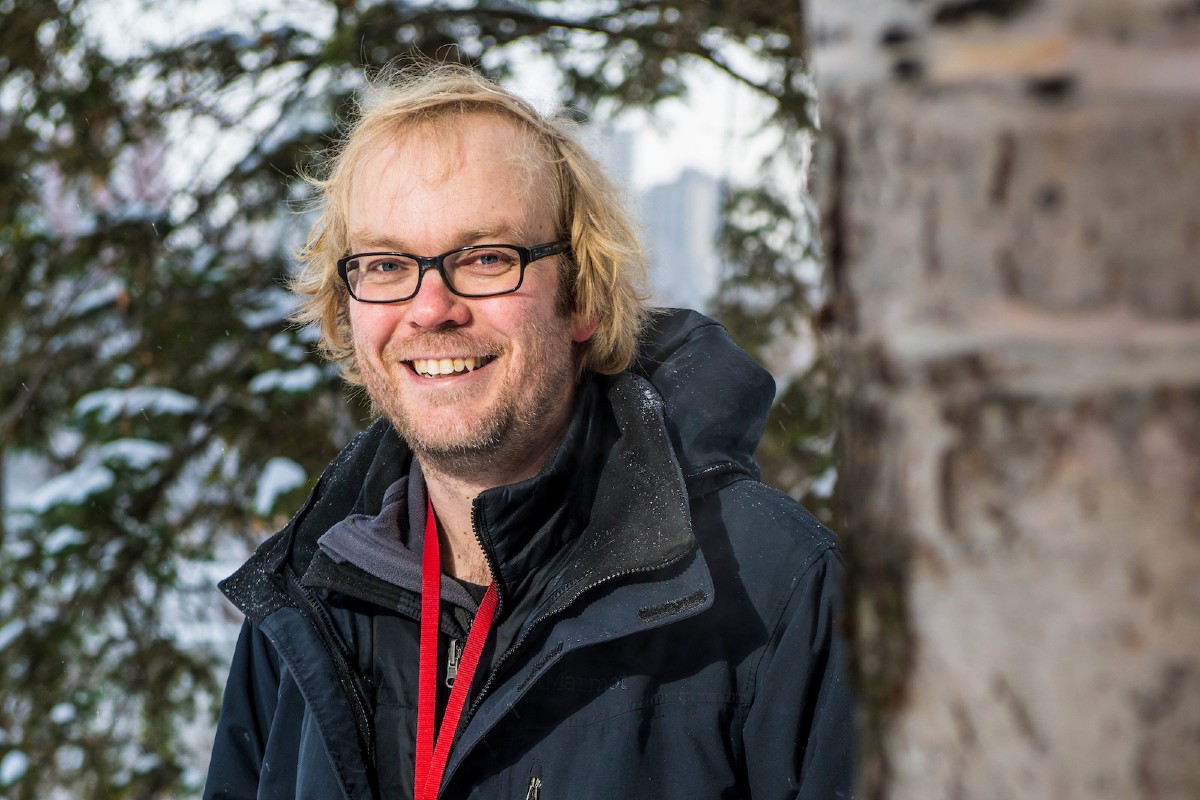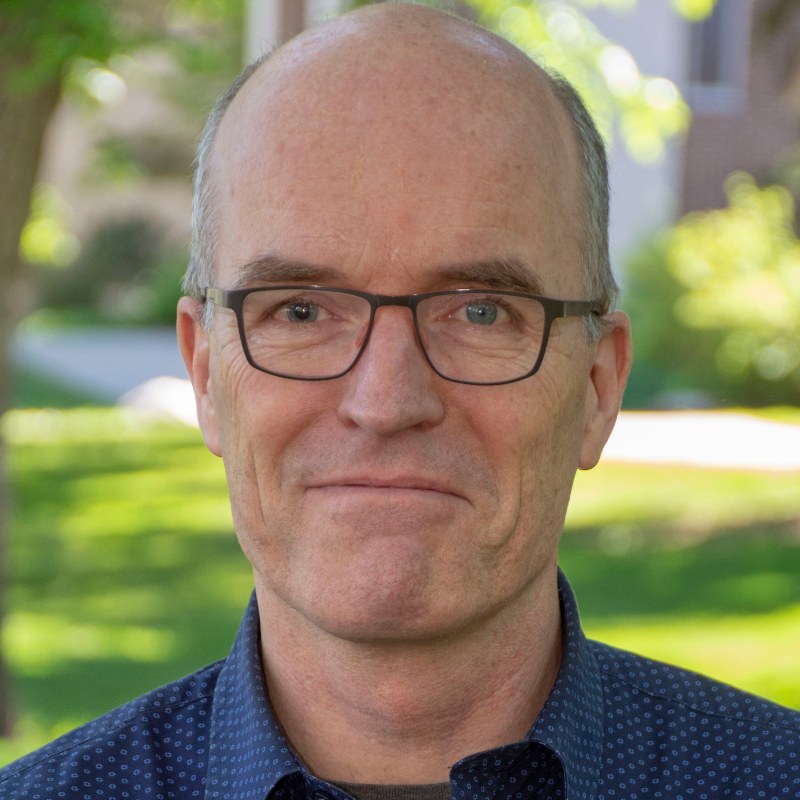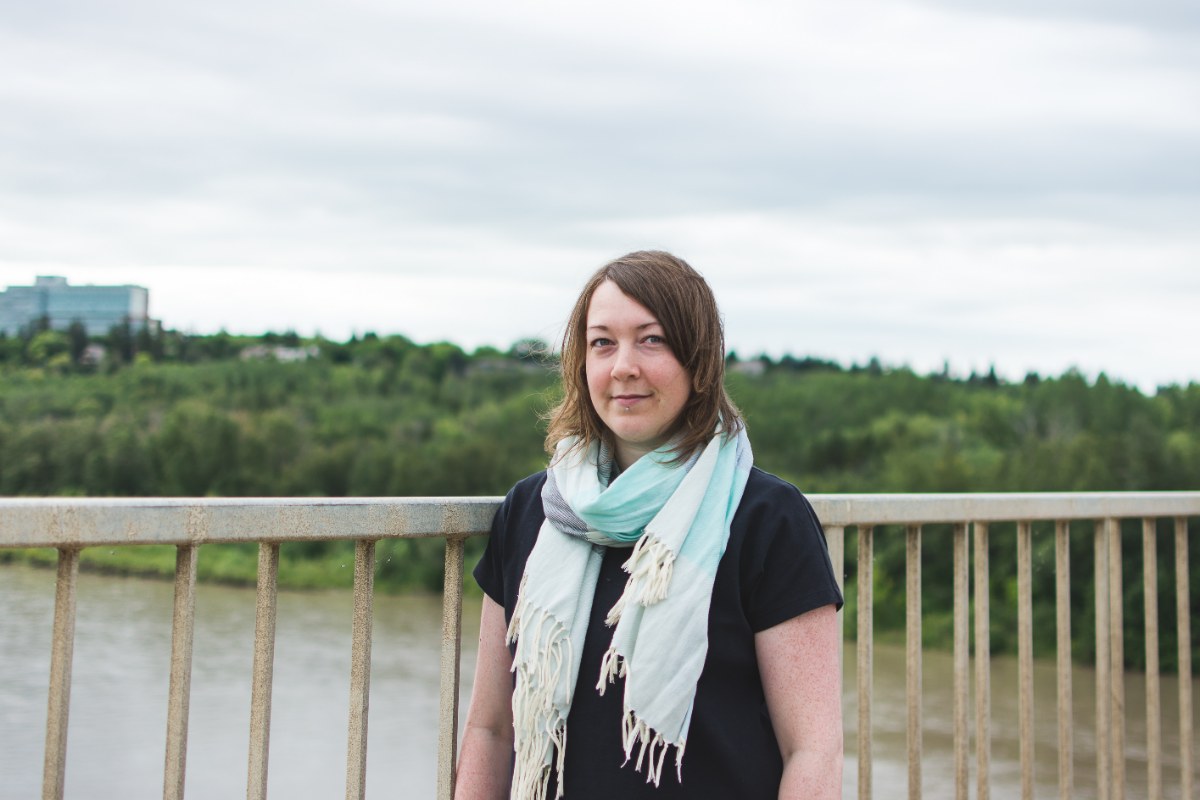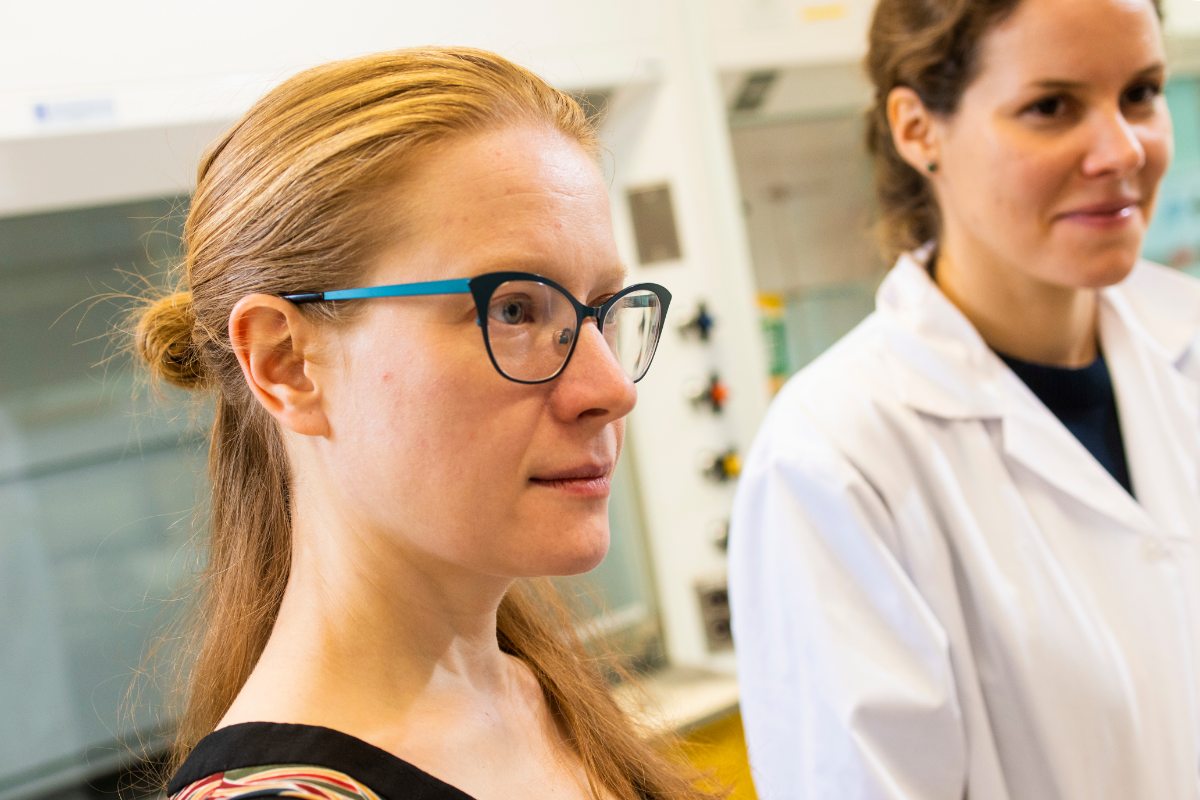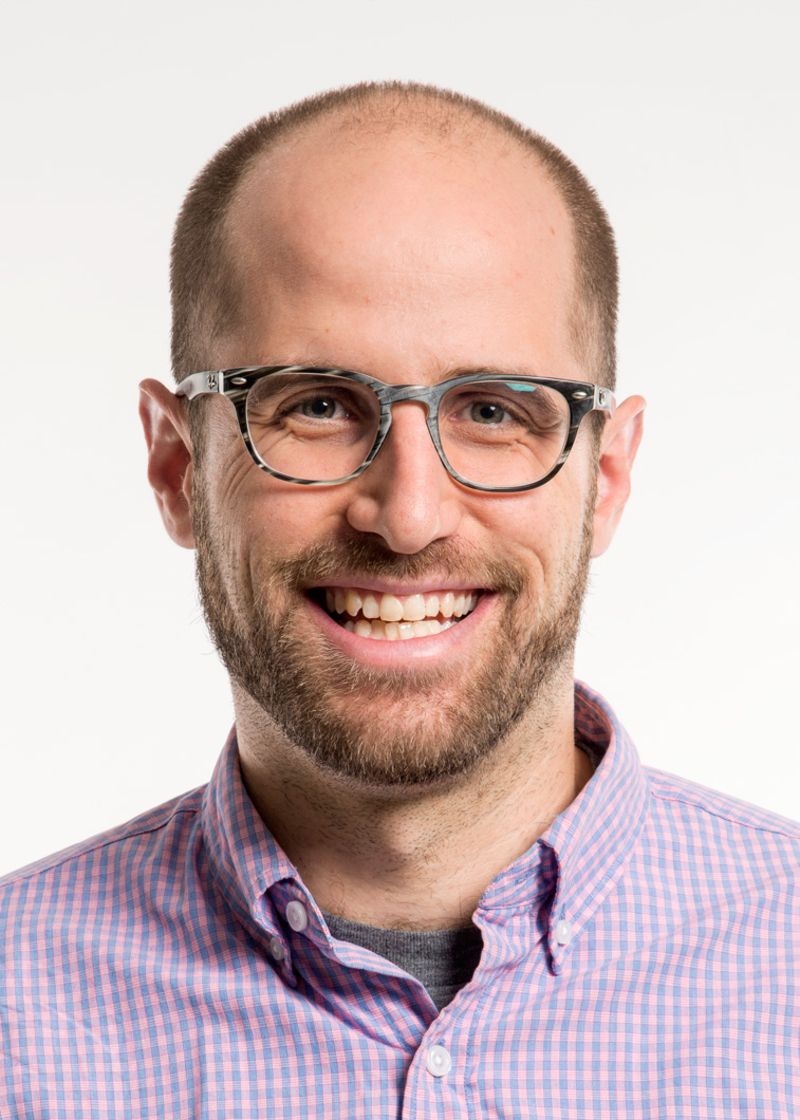
David Favero, associate professor in the University of Alberta's Department of Mathematical and Statistical Sciences and Canada Research Chair in Derived Categories. Photo credits: John Ulan
Eight scientists in the University of Alberta's Faculty of Science were awarded new or renewed Canada Research Chairs.Canada Research Chairs (CRCs) are world-class scientists and scholars from diverse backgrounds who are working on new discoveries and innovations that help our environment, health, communities, and economy thrive.
Learn more about the Faculty of Science researchers and their projects below. Four faculty members are new CRCs: Matthew Macauley, Toby Spribille, Sarah Styler, and Sasha Wilson. Four faculty members are renewed CRCs: David Favero, Lindsay LeBlanc, Joseph Maciejko, and Thomas Stachel.
David Favero
Geometry guides our understanding of our physical surroundings. The rules of geometry help us to understand the universe through the study of the various shapes, sizes, patterns, and positions in space.
David Favero, associate professor in the University of Alberta's Department of Mathematical and Statistical Sciences and Canada Research Chair in Derived Categories, studies geometry through derived categories, a form of mathematical data that offers a unique interpretation of the physical universe's most fundamental building blocks. In this way, Favero explores unsolved questions in geometry using the latest mathematical techniques.
Favero's field of research stands at the crossroads of modern math and high-energy theoretical physics, through which he examines phenomena such as geometric invariant theory, and enumerative and homological mirror symmetry. His work includes the discovery of new mathematical theories that describe and generalize derived categories and uses them to solve mathematical problems and explain phenomena predicted by physicists.
Favero's research has the potential to solve important questions in mathematics.
Lindsay LeBlanc
The discovery of quantum mechanics in the early 20th century changed our understanding of the physical world, and sparked the development of many new technologies. Today, quantum mechanics is behind many of the technologies powering modern life-from transistors that enable complex calculations in the stock market to digital image-capture technologies in cameras.
Lindsay LeBlanc, faculty member in the Department of Physics and Canada Research Chair in Ultracold Quantum Gases, is fascinated by the complexity of quantum mechanics: predicting how so many particles will act together is difficult or impossible for even the most advanced computers.
Like people grouped together in communities, when quantum particles are close to each other, they show traits differing from their usual, individual ones-a phenomenon scientists call "many-body" behaviour. Once understood, these behaviours can be applied in practical scientific advances, such as exponentially more powerful quantum computers.
LeBlanc and her research team use laser-cooled quantum gases to examine and exploit the quantum mechanical properties of these nearly-ideal quantum systems. By focusing both on fundamental research questions and on practical applications of these systems, including ways to manipulate and store quantum information, LeBlanc's research sets the stage for the development of a new class of quantum technologies.
Matthew Macauley
Every day, your immune system responds to threats, invaders, and even your own cells to protect your body against illness and disease. This immune response is guided by carbohydrates, or sugars, in the body and on pathogens.
Carbohydrates play complex roles within our bodies-all the way from the fertilization of zygotes to programmed cell death. For chemical biologist Matthew Macauley, assistant professor in the Department of Chemistry, examining the role of carbohydrates in the immune response is the key to understanding and managing how our immune systems function.
"Questions about the roles for carbohydrates in controlling immune responses are what motivates me," explained Macauley. "Tackling these challenging questions with chemical, biochemical, and genetic approaches is powerful."
With his Canada Research Chair in Chemical Glycoimmunology, Macauley will examine how carbohydrates fine-tune antibody responses, an aspect critical for not only protection from a variety of pathogens but also essential for understanding how autoimmune diseases-like rheumatoid arthritis, type-1 diabetes, and multiple sclerosis-arise.
Macauley also received $280,000 through the John R. Evans Leadership Fund to support his research.
Joseph Maciejko
When it comes to quantum matter, the whole is more than the sum of its parts. And born through the understanding and harnessing of this idea, the next generation of innovative electronics is on the horizon. This idea, known as emergence, is based on the simple principle that there are phenomena that appear when particles are put together that was not possible when left as individual components. One example of emergence is topological insulators, a phenomenon with the potential to usher in a new era of technology and one of great interest to Joseph Maciejko, faculty member in the Department of Physics and Canada Research Chair in Condensed Matter Theory.
While the inside of a topological insulator does not conduct electricity, the surface conducts electricity at a high rate-in short, topological insulators are able to conduct electricity on their surfaces while losing little or no heat. Maciejko's research focuses on understanding this phenomenon and examining the potential applications to low-power electronics and high-speed information transfer.
His research program transcends traditional disciplinary boundaries and draws inspiration from fields as diverse as quantum physics, abstract mathematics, and elementary particle physics to advance our understanding of quantum materials and usher in a new era of technologies based on these materials, including dissipationless interconnects and a fault-tolerant quantum computer.
Toby Spribille
In the tree of life, symbiosis plays a fascinating and prolific role. All multi-celled life depends on it, but most symbioses involve something small doing a job for something much bigger, like algae sustaining the coral reefs. But for microbiologist Toby Spribille, it is the symbiotic relationships in which all the players are tiny that hold the most intrigue.
Spribille, faculty member in the Department of Biological Sciences and Canada Research Chair in Symbiosis, examines the role of symbiosis in lichens. For nearly two centuries, scientists around the globe believed that lichens were composite organisms made up of two parts: fungus and algae. In 2016, Spribille turned this idea on its head, with the discovery published in Science that a second, yeast-producing fungus is part of the basic make-up of many lichens.
His research program combines theoretical, analytical, and experimental approaches to understanding how lichens organize themselves to survive and thrive in myriad environments.
Thomas Stachel
Diamond mining is a driving economic force in the Canadian north. In fact, in 2017 Canada produced $2.6 billion in diamonds. But despite this, several Canadian diamond mines approach the end of their life span. Finding new mines through geochemical fingerprinting requires a greater understanding of the conditions that cause diamonds to form and be preserved.
Thomas Stachel, professor in the Department of Earth and Atmospheric Sciences and Canada Research Chair in Diamonds, is among only a handful of scientists in the world leading research in this critical field.
Stachel draws his well-established expertise to study diamonds and their syngenetic inclusions. Syngenetic inclusions are minerals contained within diamonds that are formed at the same time and by the same processes as the host diamonds. Studying these inclusions will provide valuable qualitative and quantitative data, which the diamond industry can employ to locate diamond deposits and predict their quality.
Stachel is uniquely equipped to conduct this research, drawing upon his established expertise, state-of-the-art infrastructure in analytical facilities, and robust industry partnerships with leading diamond research and exploration companies. The discoveries of Stachel's world class team continue to significantly advance diamond research and further Canada's leadership in diamond production.
Sarah Styler
Air pollution has been a serious challenge faced by urban populations for more than a century-from foggy, coal-blackened London in the 1950s to sunny, traffic exhaust-choked Los Angeles in the 1970s. But in the 21st century, issues with air pollution and air quality are undergoing yet another dramatic change. As a result of emission regulations, most vehicular particulate emissions currently arise from non-exhaust sources like brake dust and road wear. In addition, as a result of climate change, urban air quality is increasingly influenced by wildfire particulate emissions.
Sarah Styler, faculty member in the Department of Chemistry and Canada Research Chair in Atmospheric Chemistry, is dedicated to understanding and learning how best to mitigate these new and growing challenges. Her research program focuses on the chemical reactivity of these emerging classes of particulate matter, building an understanding of the lifetime of pollutants and the composition of the urban atmosphere.
Styler's goal is to provide new insights into the impacts of wildfire particulate matter and non-exhaust vehicular emissions on urban air quality-in other words, to better understand the atmospheric chemistry of tomorrow's urban centres and provide insight into the air quality, climate, and health challenges that they pose.
Sasha Wilson
In the world of resource recovery, topics such as sustainability, reclamation, and environmental stewardship are of critical importance. Yet these topics are generally considered separate from, though necessary for, the traditional practices of mining.
Enter Sasha Wilson, faculty member in the Department of Earth and Atmospheric Sciences and Canada Research Chair in Biogeochemistry of Sustainable Mineral Resources. Wilson's work examines environmental sustainability in the minerals industry, specifically using metal mobility for metal recovery and carbon sequestration. Her work embeds reclamation and stewardship efforts in the work of mineral processing and waste management, making efforts toward sustainability a regular part of daily practices.
As the Canada Research Chair in Biogeochemistry of Sustainable Mineral Resources, Wilson's work takes her around the world to mine sites and to dynamic natural environments, such as saline lakes, which like mines are hotspots for rapid metal and nutrient mobility. Her work provides economic and environmental advantages that inform and improve the health of both natural and mined landscapes.
